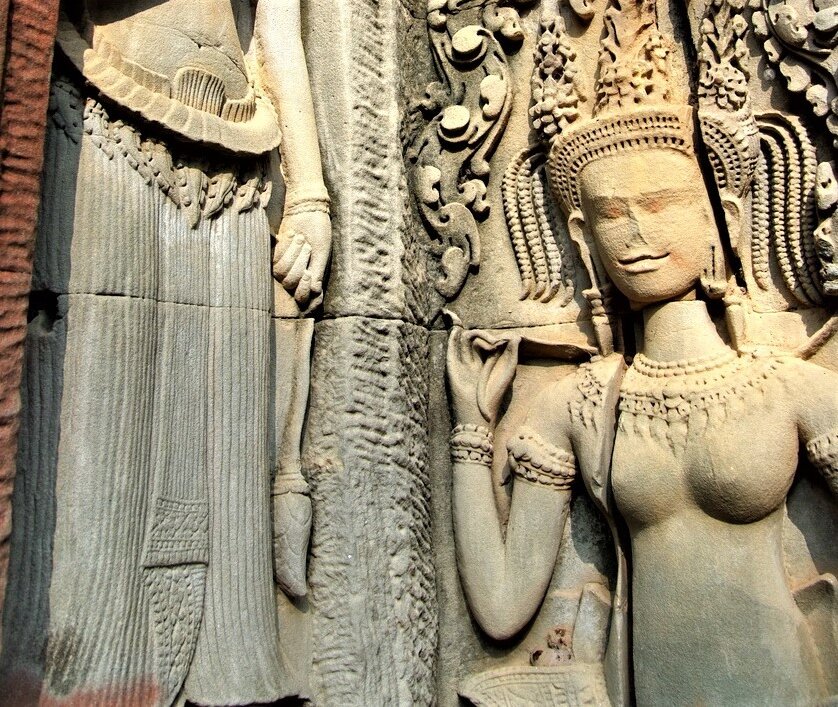gopura
sk गोपुर gopura, "elaborate gateway" |
Gopura in Indian architecture refers to a tower above a gateway or archway, "towers at the entrances of a temple". The term is also used as saṃdoha, a "meeting place" of the Yoginis.
Garments and hand gestures of devata (goddesses) as indicators for historians and archeologists.
Tags: devatas, apsara, sculpture, prasat, Suryavarman II

Studying occurences of the pleated sampot and the draped, flower-patterned one distinctive of Angkor Wat sculptures, Kent Davis suggests that this relatively small temple, probably built by the Hindu King Suryavarman II, was dedicated to both “contemporary” and more ancient goddesses.
This photo essay is also an invitation to further studies on mudras, hand and finger gestures part of the Hindu and Buddhist symbolic and ritual (in yoga practice, mudras involve many other parts of the body). Indian scriptures list 24 types of asamyuta (“separated”, with one hand) and 13 samyuta (with joined hands) mudras.
Like so many sculptures at Angkor, the goddesses of Thommanon hold flower stems with the ring and middle fingers pressed against the thumb, while the index and small fingers are raised. This hand gesture, which Kent Davis calls “devata mudra”, is reminiscent of the hamsapaksha (“swan wing”) mudra in Indian classical dance.
More about Thommanon Devatas collection here.
Thommanon (ប្រាសាទធម្មនន្ទ) is one of a pair of Hindu temples built during the reign of Suryavarman II (1113 – 1150) east of Victory Gate (Angkor Thom) and north of Chau Say Tevoda. The temple is dedicated to Shiva and Vishnu, yet female deities are omnipresent in the sculpted and carved artwork.
The single-towered (prasat) temple is accessed from the east via a gopura, followed by a mandapa, or antechamber, before reaching the central sanctuary.
NOTE: All photos in this collection can be republished online without alteration and with the appropriate credit: © Copyright 2019 Kent Davis — DatAsia.us. Licensed for public use under Creative Commons Attribution 3.0| High-resolution photos can be ordered. Inquiries email hidden; JavaScript is required.